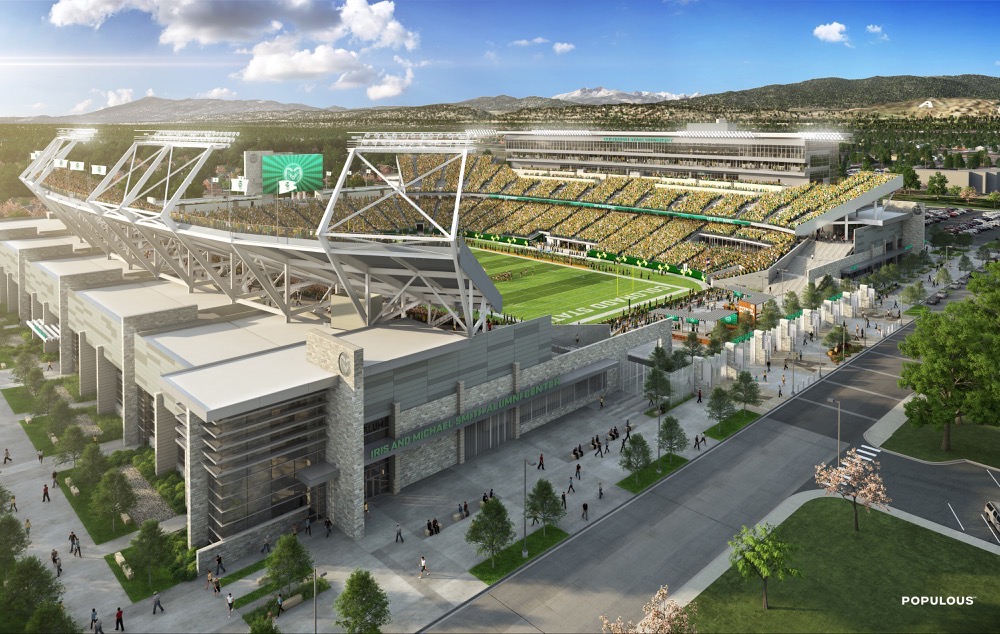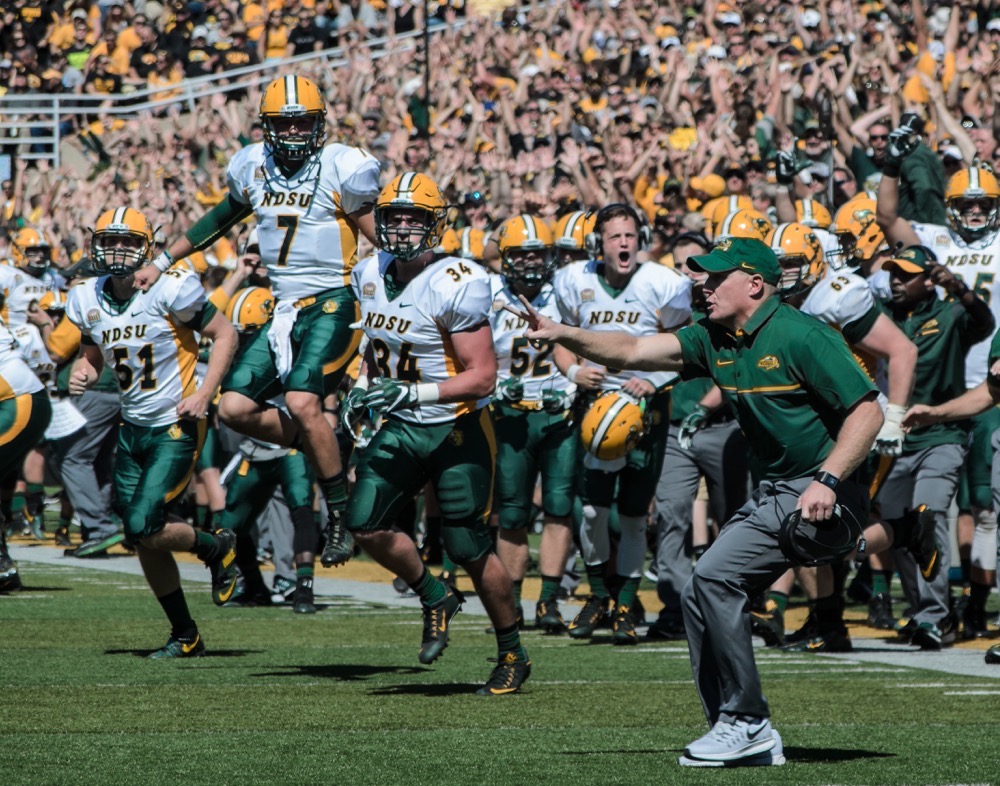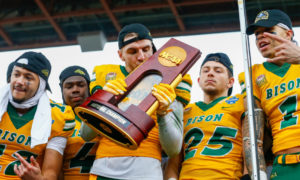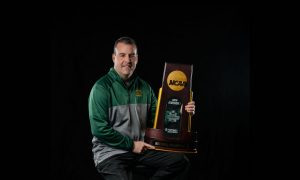Photos special to Bison Illustrated
We asked you, Bison Nation, to send us your questions about the NDSU athletic program and you answered the bell. Now it’s time for Bison Illustrated and NDSU Director of Athletics Matt Larsen to answer back. Where does NDSU stand financially? Should NDSU go to the FBS? These burning questions and more were proposed by you and Larsen has the answers.
Read Part 1 of our 4-part series here.
Read Part 2 of our 4-part series here.
Read Part 3 of our 4-part series here.
Editor’s Note: Two weeks after we published this article in the magazine, USA Today updated its finance numbers through the 2016 year. Go to this link to find the updated numbers through 2016.
WHAT TO REMEMBER
To make the FBS jump, NDSU needs a bigger football stadium and an invite to join an FBS conference. Let’s break it down.
BUILD, BUILD, BUILD!
WHAT’S THE SUCCESS RATE FROM JUMPING FCS TO FBS?
From 1978-2010, 19 teams made the jump. “According to the NCAA’s study, the average winning percentage of those 19 teams when they were in FCS was 55.7 percent. In the FBS, that fell to 44.8 percent. They’ve also seen far fewer winning seasons, from 64.4 percent in the FCS to 37.2 after moving up a classification.” Kristi Dosh, Sports Business, 2013
WHO’S MADE THE LEAP RECENTLY?
From 2012-2017 Appalachian State, Charlotte, Georgia Southern, Georgia State, UMass, Old Dominion, South Alabama, Texas State, UTSA, Coastal Carolina and Liberty (2018) have all gone to the FBS.
COST INCREASE FOR MORE SCHOLARSHIPS
To increase scholarship allotment from 63 to 85, it will cost NDSU an extra $313,940/year.
SO, YOU WANT TO BUILD A BIGGER STADIUM?

In order to make a push toward the Big 12, Colorado State built a bigger stadium, increasing football capacity by 7,585.
Name: Sonny Lubick Field at Colorado State Stadium
Capacity: 40,085
Cost: $220.1 million
Broke Ground: May 2015
First Game: August 2017
Major Gifts: $20 million naming rights; $4.3 million for party deck
Financing Details: Investors and donors. No funding from student tuition or the state was used. Bonds were sold to help with the majority of the stadium cost.
THE TWO SIDES OF MAKING THE FBS MOVE

*Reporting from USA Today NCAA Finances
^Reporting from U.S. Department of Education
1. NO CONFERENCE, NO WORRIES? THINK AGAIN.
UMass jumped to the Mid-American Conference in 2012, where they went 1-11 in back-to-back seasons. They left after two years when they declined to move all of their sports programs to the MAC. UMass kept all their programs in the Atlantic-10 and their football team became one of the five FBS Independent teams. Being without a conference allows your program to be flexible in scheduling but it also creates a challenge—as NDSU experienced when they made the transition from Division II. UMass’s independence has also prevented them from cashing in on the broadcasting rights checks FBS conference members receive across the nation. By not being in the MAC, they are missing out on a $670K check every year, according to an ESPN report.
2. STUDENT-FUNDED STADIUM EXPANSION
Paulson Stadium, home of the Georgia Southern Eagles, holds 6,000 more people than the Fargodome. Conveniently, those 6,000 came from a $10 million stadium expansion in 2013, the first year of Georgia Southern’s transition to the FBS. Students voted in 2012 to pay a $25 fee for the stadium expansion, and that was on top of a prior student fee of $75 to join the FBS.
3. TOP-NOTCH CONTRIBUTIONS
North Dakota State received more than $4 million in contributions in 2015. That number has grown to more than $5.7 million in 2016 and Team Makers donated $4.7 million in cash donations alone. According to USA Today, NDSU receives the fourth-most revenue dollars through contributions in the FCS and would rank first in the Mid-American Conference. Contribution dollars make up the difference where NDSU falls short. These categories include student fees and school funds. More on this in No. 4.
4. STUDENTS PAYING TO PLAY
According to USA Today, Georgia Southern’s student fees for athletics hit $9.5 million in 2015, which is more than 45 percent of the school’s reported overall revenue. NDSU’s student fees made up less than seven percent of the total revenue. The average Group of Five (AAC, Conference USA, MAC, Mountain West and Sun Belt) program received approximately $18 million in subsidy—which includes student fees and school funding—per year. According to USA Today, NDSU was subsidized less than $10 million per year compared the average Group of Five School.
5. TOTAL REVENUE STAYS STEADY
For the most part, NDSU has kept pace with UMass and Georgia Southern since the two schools moved to the FBS. According to the U.S. Department of Education, NDSU’s total revenue after the 2015 season was $25.3 million while UMass and Georgia Southern totaled $36.5 million and $18.1 million, respectively.
LARSEN’S TAKE: WHY NO FBS INVITE?

“There’s really two FBS conferences within our region that would make sense. You have the MAC and you have the Mountain West. There hasn’t been a big shake up there. I think if any of them were to lose members then I think they would look within the region to see who makes sense in terms of replacements.”
*Numbers based on data taken from sports: usatoday.com/ncaa/finances









